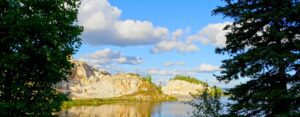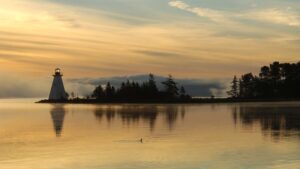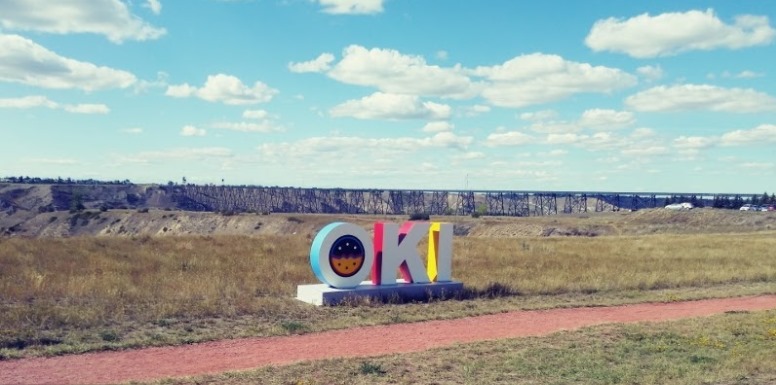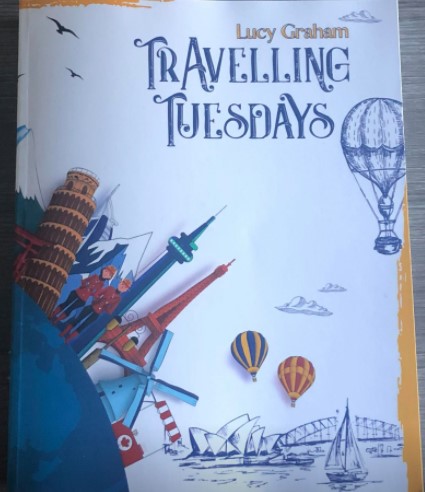Bras d'Or Lake UNESCO Biosphere Reserve
Bras d'Or Lake UNESCO Biosphere Reserve
UNESCO World Heritage Site - Bras d'Or Lake - Day 507 - Daily Content Challenge
The Bras d’Or Lake Biosphere Reserve was designated a UNESCO biosphere reserve in 2011. The designation means that the area is managed in a way that preserves the region’s natural and cultural heritage, while promoting sustainable development.
The Bras d’Or Lake Biosphere Reserve covers an area of approximately 4,600 km² and includes the Bras d’Or Lake itself. Bras d’Or Lake is located in the middle of Cape Breton Island. Cape Breton is a rugged island covering about 10,280 km² located north-east of mainland Nova Scotia. It is joined to the mainland by a 1.4 km causeway that was built in 1955.
Bras d’Or Lake is a salt-water estuary watershed. It is an inland sea with three passages to the Atlantic Ocean. The lake is surrounded by a diverse landscape of forests, wetlands and coastal habitats. The biosphere reserve is home to many species of fish. The most common fish found in the lake are cod, white hake, and winter skate.
Erosion has resulted in steep hills around the lake and peninsulas within it. These peninsulas divide the estuarine ecosystem into five, long, deep channels in the north half of the lake and a number bays in the south. Along the west side of the watershed, steep hills rise abruptly to the Cape Breton Highlands.
The Bras d’Or Lake Biosphere Reserve is significant from a cultural perspective as well. The original settlers colonized this region following the retreat of glaciers, and today their descendants make up the five Mi’kmaq populations living within the biosphere reserve.
The majority live in four of the six official reserves: We’koqmaq (Whycocomagh), Wagmatcook, Eskasoni and Potlotek. Malagawatch, which is occupied seasonally, is also within the biosphere reserve area and the sixth reserve, Membertou, located near Sydney, is just outside the biosphere reserve area. This community is closely associated with the aboriginal communities within the biosphere. The Mi’kmaq people have lived in the area for centuries. Their culture and traditions continue to be an important part of this region’s identity.
European settlers arrived in the area in the 18th century. The region became an important centre for shipbuilding and trade. The communities surrounding the lake continue to rely on the region’s natural resources, including forestry, fishing, and tourism.
One of the objectives of the biosphere reserve is to promote research and education about the area’s ecology and culture. The Bras d’Or Lake Biosphere Reserve Association works closely with local schools and universities to promote public awareness of the area’s importance and to provide education opportunities for students.
The Alexander Graham Bell National Historic Site, established in 1952 to commemorate the life and achievements of Alexander Graham Bell, is located near the Bras d’Or Lake UNESCO Biosphere Reserve in Baddeck, Nova Scotia. A museum which includes exhibits about Bell’s inventions and his life and legacy,, is not officially part of the biosphere reserve.
I have been to Baddeck and visited the Alexander Graham Bell museum but I didn’t realize the Bras d’Or Lake had been designated as a UNESCO Biosphere Reserve.
Continuing to learn something new as I create these posts.
# living life abundantly # published author # travelling tuesdays
Have you been to Bras d'Or Lake?
Share your answers in the comments below.






